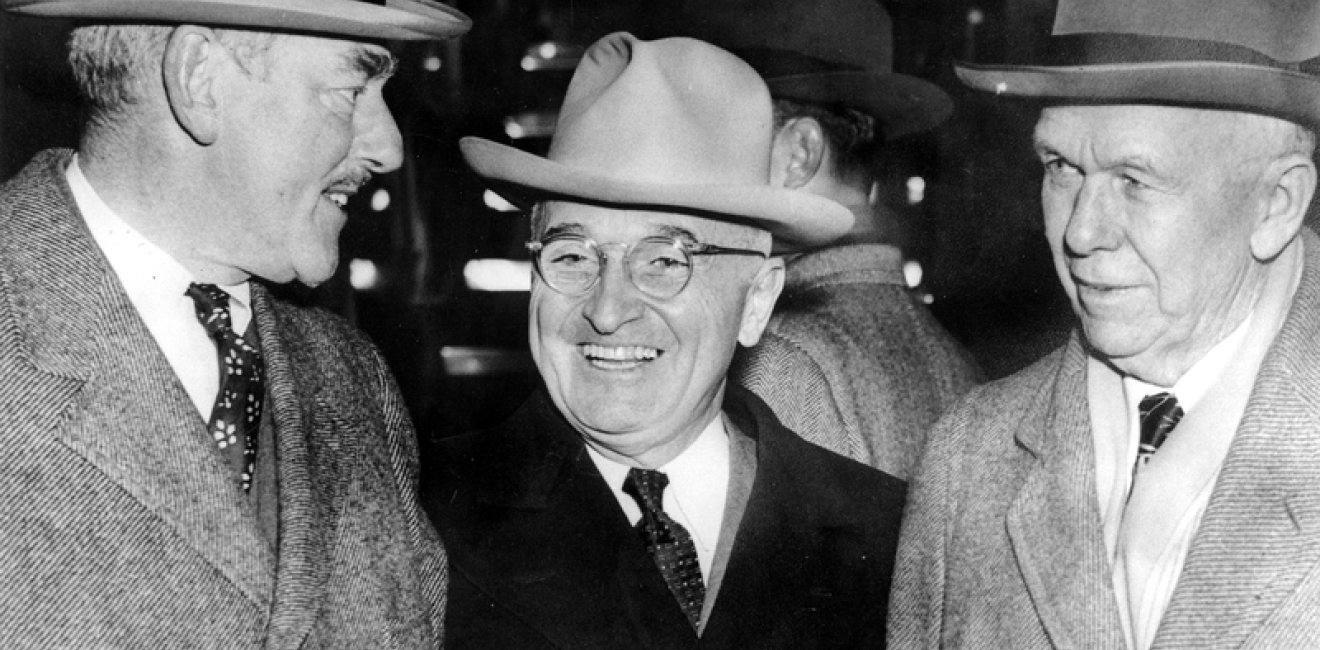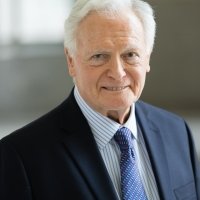Korea and the Fear of World War III
The Korean War fundamentally transformed Cold War competition between Moscow and Washington, driving a massive buildup of US strength.

A blog of the History and Public Policy Program
The Korean War fundamentally transformed Cold War competition between Moscow and Washington, driving a massive buildup of US strength.

In the early days of December 1950, fear and despair gripped senior officials of the Truman administration. Only two weeks earlier advanced patrols of American and South Korean forces had reached the Yalu River border between North Korea and Manchuria. Now a massive Chinese offensive had completely surprised them and driven them back toward the 38th Parallel. President Harry Truman ordered a broad strategic review to evaluate all possible responses.
By December 3 national security leaders had agreed on policy goals. The United States would abandon its objective of unifying Korea and holding elections under United Nations auspices. Washington and its allies would continue fighting in Korea; they would avoid a general war with China and its Soviet sponsor; and their basic goal would be to negotiate a cease-fire around the 38th Parallel after improving their military position. Underlying this concept were two fundamental principles: General Douglas MacArthur, the commander of UN forces in Korea, would have to fight without any large addition of troops, and US defense resources would have to be expanded for the top priority of defending Europe.
The Truman administration had strengthened its commitment to these policy goals by December 8. Led by the president, Secretary of State Dean Acheson, and Secretary of Defense George C. Marshall, the US had rejected the demands of a high-level British delegation for an immediate cease-fire and major concessions to the new Chinese communist government.
Intelligence reports soon confirmed American leaders in their decisions but heightened their fears. A detailed CIA memorandum of December 2 argued that the Soviet Union was the initiator of the Chinese intervention and the main source of its weapons and supplies. It concluded with the warning that “the USSR is prepared to accept, and may be seeking to precipitate, a general war between the United States and China, despite the inherent risk of global war.” An item in the CIA’s daily briefing of December 7 reinforced this warning. It stated that Zhou Enlai, Mao Zedong’s foreign minister and top adviser, had declared to the East German ambassador in Beijing that “a third world war is inevitable as long as neither UN nor Chinese forces are willing to leave Korea. Zhou said that China has therefore made itself ready for World War III.”
Zhou Enlai’s comments combined with the fact that Chinese “volunteers” were driving American and allied forces below the border and well into South Korea made an impression upon Harry Truman, who declared in his dairy for December 9: “It looks like World War III is here.”
In the early months of 1951 officials in the defense department and the budget bureau developed detailed plans to meet the challenge posed by the heavy Soviet support for the massive Chinese intervention in Korea. They worked intensely under the specter of a possible global war against the communist allies. By April 1951 they were ready to submit to Congress their budgets to implement fully the plans called for in NSC 68/4.
The new strategy called for a huge expansion of defense and military assistance programs for the defense of Europe while continuing the Korean conflict to an acceptable cease-fire. Showing the administration’s sense of urgency, the budgets advanced the date for completion of the expansion from mid-1954 to mid-1952. For the long term this defense package would establish a dominant nuclear strike force for deterrence of Soviet aggression and defense against surprise attack. To create this strike force, the funding provided for the development of a series of improved long-range bombers including the path breaking B-52 and for the production of more nuclear weapons.
This expansion sharply increased defense spending. Not including military or foreign aid, defense budgets totaled $13 billion for 1950, $48 billion for 1951, $60 billion for 1952, and $47 billion for 1953.
Overall, the buildup doubled the size of the armed forces from 1.5 to 3.3 million men. It increased the army from 10 to 18 divisions, the navy from 237 to 342 major combat ships, and the air force from 48 to 72 wings. In Europe, it added four divisions to US forces assigned to NATO, created a functioning international staff, and named General Dwight Eisenhower as Supreme Allied Commander.
The Truman administration designed this unprecedented expansion of US defense and foreign policy commitments for peacetime after a cease-fire in Korea. This buildup fundamentally transformed the nature of the Cold War from a political and economic contest between the United States and the Soviet Union into a superpower nuclear arms competition.
The widespread fear of World War III drove the buildup of US strength, and the Korean War fundamentally transformed Cold War competition between Moscow and Washington.


A leader in making key foreign policy records accessible and fostering informed scholarship, analysis, and discussion on international affairs, past and present. Read more


The North Korea International Documentation Project serves as an informational clearinghouse on North Korea for the scholarly and policymaking communities, disseminating documents on the DPRK from its former communist allies that provide valuable insight into the actions and nature of the North Korean state. Read more


The Cold War International History Project supports the full and prompt release of historical materials by governments on all sides of the Cold War. Read more



